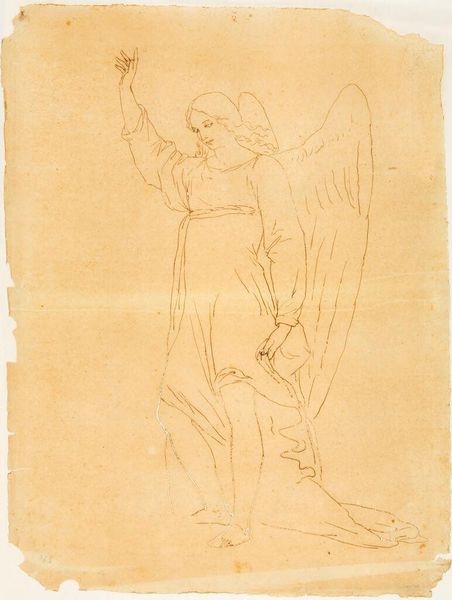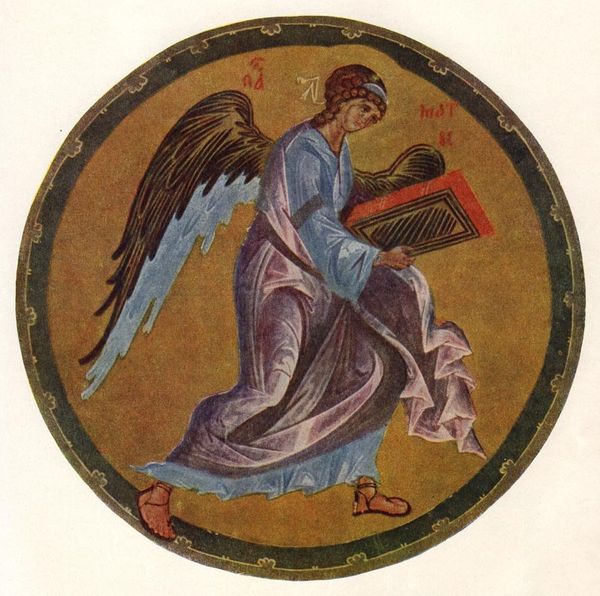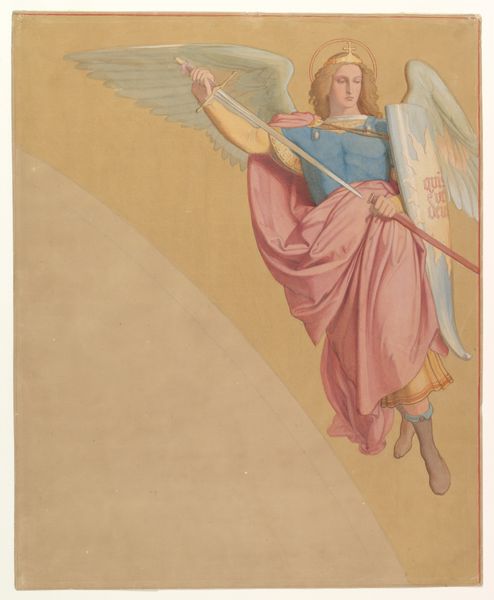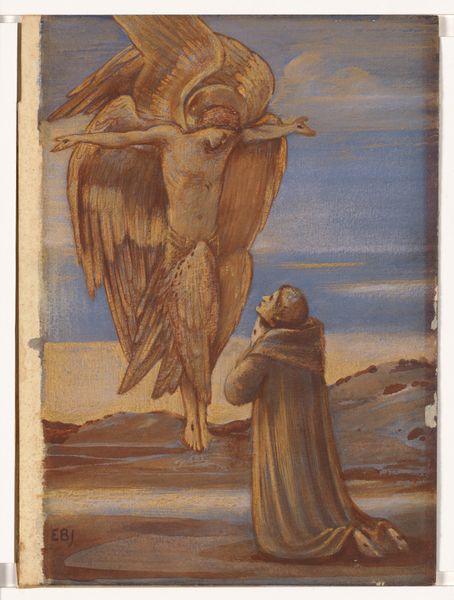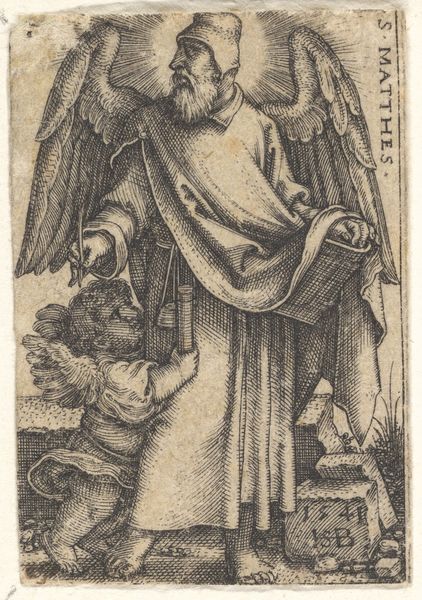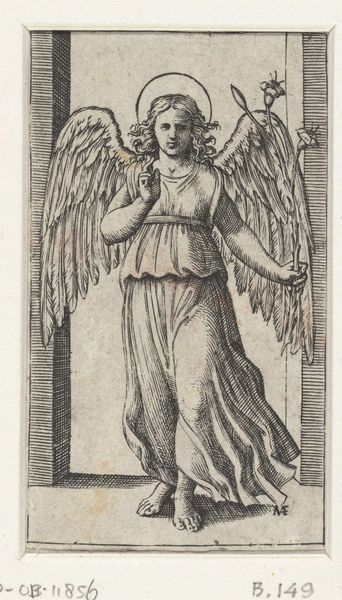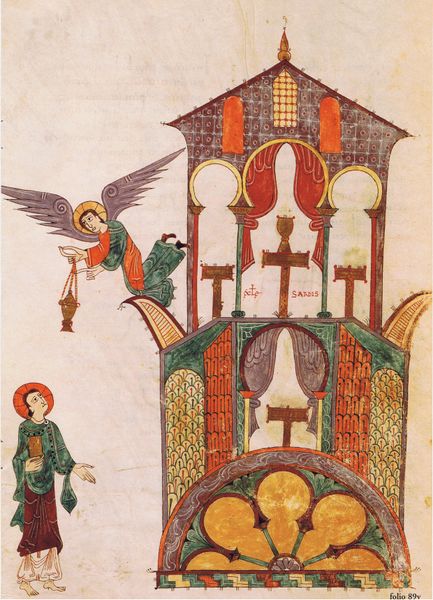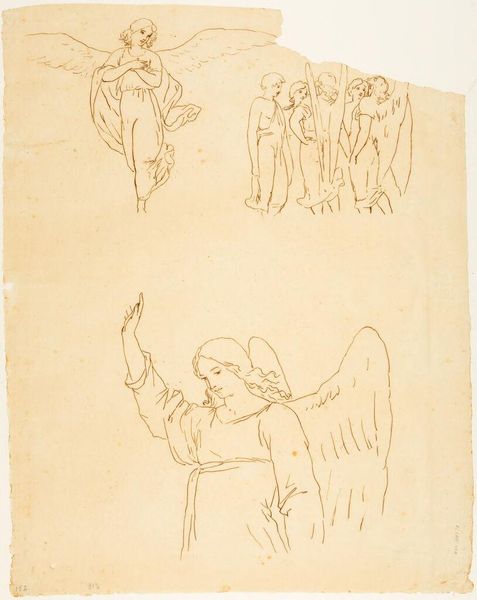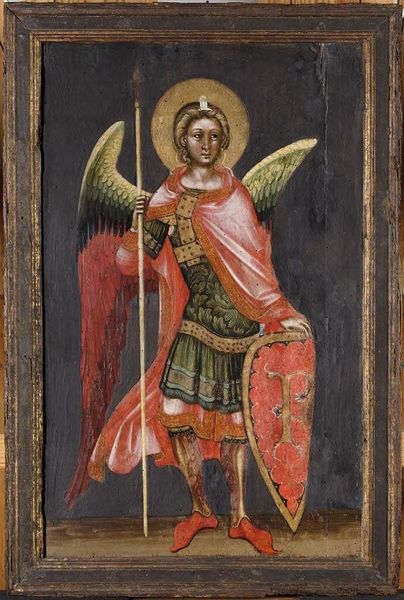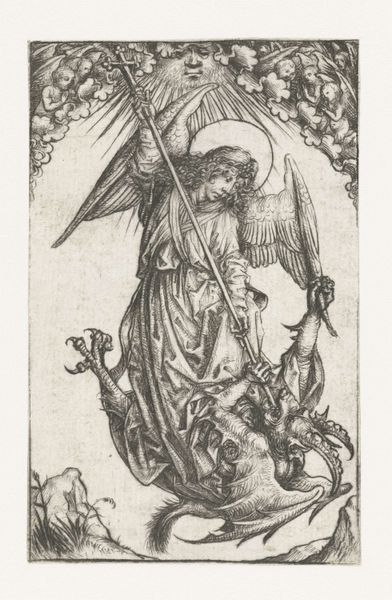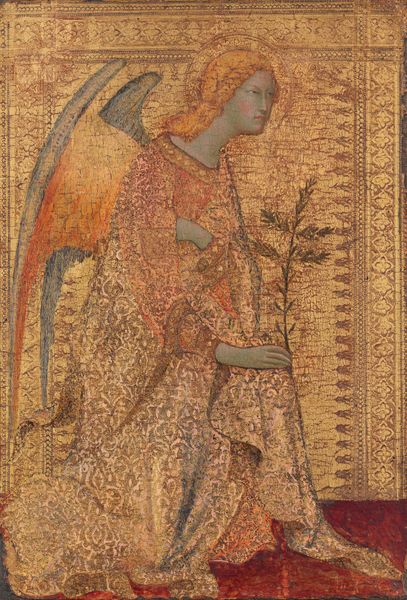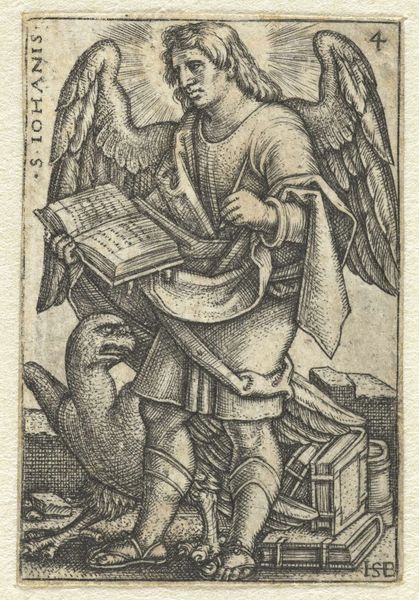
drawing, watercolor, ink
#
portrait
#
drawing
#
medieval
#
pencil sketch
#
figuration
#
watercolor
#
ink
#
christianity
#
costume
#
angel
Copyright: Public domain
Curator: Here we have a drawing attributed to Jan Matejko, titled "Angel with flutes." The piece incorporates ink, watercolor, and pencil sketch techniques. Editor: Immediately, I’m drawn to the fragility of the work. The angel is rendered in delicate lines, with watercolor washes that seem almost translucent. There’s a tenderness to the material handling. Curator: Indeed. Angels, of course, hold a central place in the Christian faith, embodying intermediaries between the divine and mortal realms. Matejko’s representation contributes to a vast history of angel imagery, which tells us a great deal about the shifting cultural values and religious beliefs across time periods. The angel is portrayed playing two distinct flute-like instruments, so it makes me wonder about his association with both the fine arts and religion. Editor: I find myself focusing on the details of those flutes. Considering the angel as a maker and musician draws my attention to the craft embedded in religious artwork. What was involved in making these flutes, what sound would they make? Curator: Good point. The ethereal nature of the watercolor seems fitting for such a heavenly being. The relatively subdued palette emphasizes spirituality over earthly splendor. The angel also occupies a liminal space, and the very concept can be linked to ritualistic or festive activities that would benefit local churches. Editor: Though "subdued" might not fully describe those wings. The saturated yellows, blues and greens draw the eye and become a point of focus amidst the paler washes, acting as more of a celebration. And this emphasis also raises questions: how much did Matejko’s workshop rely on assistants for tasks like applying watercolor washes? Was Matejko experimenting to add a vivid aesthetic element to such a religious piece? Curator: I believe these details shed some light on Matejko's interpretation of traditional artistic themes while pointing toward subtle innovation. Artists would always seek patronage through Churches but there was always a powerplay in determining creative vision. The visual language can be examined to identify the social structures and belief systems that underpinned Matejko’s creative output. Editor: Exactly. Considering the cost and access of those materials also allows us to examine how the material processes interact with traditional symbols, beliefs, and visual traditions, even when representing something seemingly timeless.
Comments
No comments
Be the first to comment and join the conversation on the ultimate creative platform.
